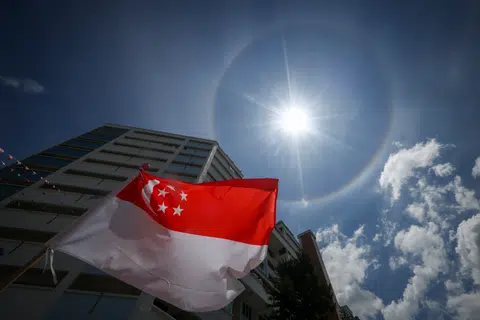Midday sun halo over Singapore delights netizens
"Happening now," said a netizen.
A ring of light that appeared in the sky over Singapore around noon on Aug 25 delighted the young and the old alike, with many snapping photos of the uncommon sight and sharing them online.
The natural phenomenon, known as a sun halo, is produced when sunlight interacts with ice crystals in the atmosphere. The crystals are made of ice rather than water droplets, due to their high altitude.
Images of the sun halo were shared on social media, with some calling on others to head out and witness it for themselves.
"Happening now," alerted a netizen who shared a photo on The Photographic Society of Singapore's Facebook page.
On TikTok, another said: "Don't miss it, guys. Go out and watch it (with) protected sunglasses."

While it is safe to look at the halo with the naked eye, the National Environment Agency (NEA) had previously said it would be dangerous to look directly at the sun without proper protection.
Ms Natalie Neo was working from home at Farrer Road when she spotted the sun halo at around 12.30pm. She told The Straits Times it was her first time coming across this natural phenomenon.
"I felt blessed that I was able to see something like that!" said the 34-year-old, who works in marketing.

Professor Matthias Roth, who teaches geography at the National University of Singapore, previously told ST: "As light enters one face of the ice crystals and exits through another, it is bent by about 22 degrees, which accounts for the radius of the halo."
The phenomenon was previously spotted on March 15.
According to NEA, a sun halo is not a common sight in Singapore as it is usually covered by low to mid-level clouds.
The agency previously said that it is difficult to forecast the precise location of these ice crystals in the atmosphere, which will determine where the halo can be sighted.
Rhea Yasmine for The Straits Times